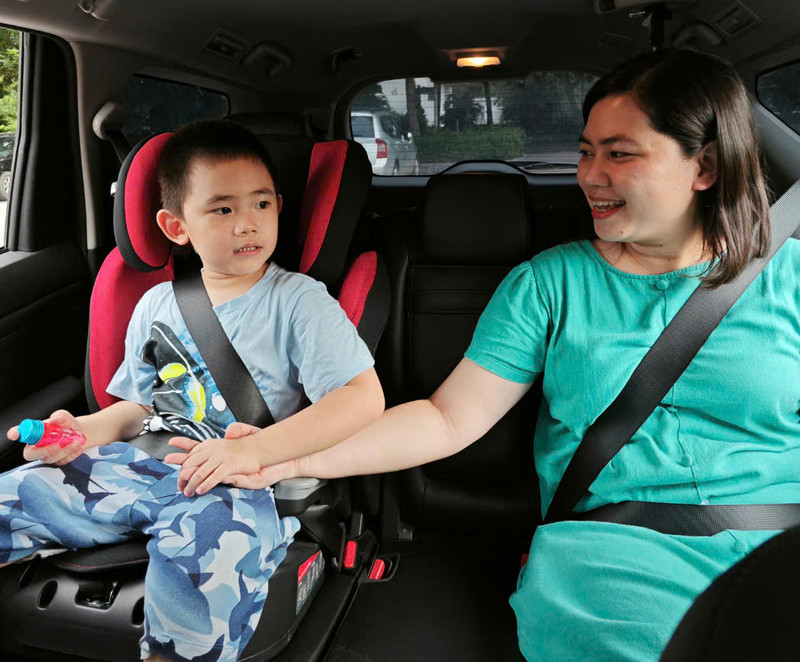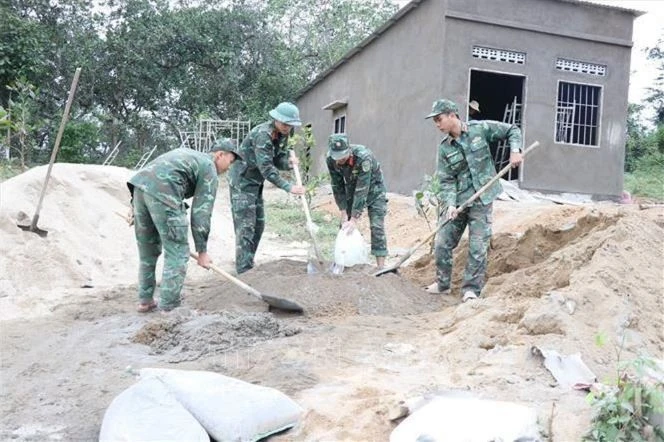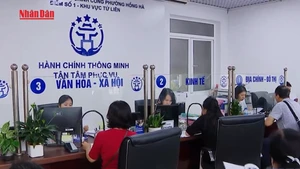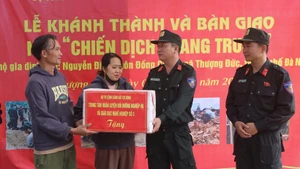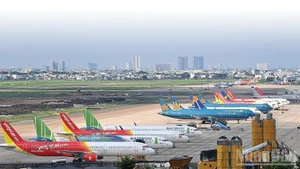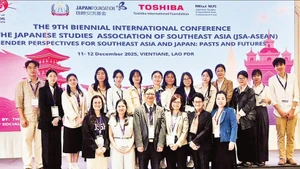Dangerous roads are not only a risk to our children but to our environment and planet too. A dangerous road leads to a dangerous city in which no one benefits. In order to achieve the targets and goals outlined in the 2030 Sustainable Development Agenda ensuring a more sustainable future for all, we must act together.
Achieving legal changes together
The Government of the Socialist Republic of Vietnam has taken a crucial step towards these goals as they announced their new road safety laws to protect children. The National Assembly of Vietnam passed two measures with strong majority to require children under 10 years of age to sit in the back seat of vehicles. They also require children to be secured in an approved child restraint system if they are under 10 years and 135cm tall. Children must be seated in the rear of a car and child safety restraints (CRS) must be used. The Road Traffic Safety laws will take effect in January 2025, with the CRS regulations coming to effect in January 2026.
“On behalf of AIP Foundation’s members, we are proud to congratulate the Government of Vietnam for the passing of the new road safety laws to protect children. Road safety laws are inherently designed to protect the most vulnerable road users, children. The incredible achievements in working towards the implementation of these new laws highlight the power of collective action in creating safer communities for the next generation,” shares Mirjam Sidik, Chief Executive Officer at AIP Foundation.
AIP Foundation, in collaboration with the National Traffic Safety Committee (NTSC), has been working toward these policy changes as part of the nationwide campaign amending road laws in Vietnam, supported by the Global Road Safety Partnership (GRSP) and the Global Health Advocacy Incubator (GHAI) which took place during 2021 -2024.
Overall, the changes to the Law of Road Traffic Order and Safety were supported by multiple partners including the Global Health Advocacy Incubator (GHAI), the Global Road Safety Partnership (GRSP), the World Health Organisation and relevant organisations working on road safety in Vietnam with generous funding from the Bloomberg Initiative for Global Road Safety (BIGRS).
Road Safety: A legal framework in Vietnam
In terms of a legal framework on road safety, the Road Traffic Law is the highest decree legal document in the field of road traffic and road traffic safety in Vietnam. The first Road Traffic Law was passed by the Socialist Republic of Vietnam's 10th National Assembly meeting on June 29, 2001. The National Assembly of Vietnam passed Road Traffic Law 23/2008/QH12 (amended) on November 13, 2008, and it went into effect on July 1, 2009. Legal protections that address the underlying causes of the traffic crashes remain outdated, since the last comprehensive revision to Vietnam’s Road Traffic Law 2008.
Our programme, which began in 2021, came at a critical time when the National Assembly was voting on revised traffic laws. This was an opportunity to advocate for the improvement of road traffic policies, including stronger mandates for national and local government agencies to legislate, implement, and enforce action on critical road safety risk areas. Given that road safety is a deeply intersectional, interconnected issue, some policymakers may struggle to identify where specifically impactful policy changes can be made. To deliver targeted interventions, this project prioritised the top 5 behavioral risk factors which have the most outsized effect in minimising road crashes. These are drink-driving, speeding, helmets, seat belts, and child car seats.
A human-centred approach for road safety
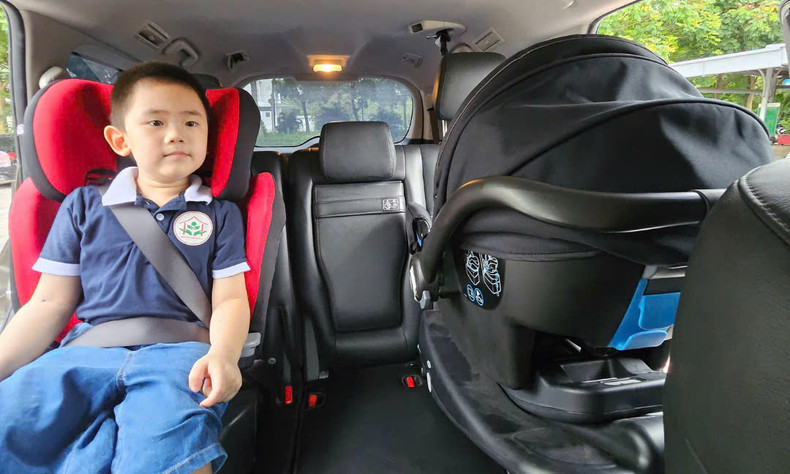 |
| Children under 135 cm in height and under 10 years old must be properly secured in a child restraint system that is suited to their size, age, and weight when being transported in a private car and are not allowed to sit in a front seat of a motor vehicle. |
To achieve the global target of reducing road injuries and fatalities by 50%, a human centred approach to mobility - and above all road safety – is mandatory for collaboration and behavioural change. The key recommendations regarding the top five behavioural risk factors that were shared with the government throughout the programmeme implementation include:
● Child Restraint Systems: Children under 135 cm in height and under 10 years old must be properly secured in a child restraint system that is suited to their size, age, and weight when being transported in a private car and are not allowed to sit in a front seat of a motor vehicle.
● Seatbelt: Every occupant in every motor vehicle including all drivers and all passengers in the front and rear seats is required to have access to a functional seatbelt and wear them appropriately
● Drink driving: Particularly serious offenses related to drink-driving should be considered for criminal prosecution even if there are no consequences and drink-driving offense records should be strictly managed to keep track of subsequent offenses and impose progressive fines.
● Speed: The speed limit should be 50km/h on all roads in urban and densely residential areas and 30km/h in school zones.
● Helmet: Maintaining the mandatory regulation of wearing standard helmets for all occupants on motorcycles, mopeds, electric bicycles, and electric scooters and complete regulations on fines for carrying children under 6 years old on motorbikes without wearing quality helmets
All recommendations were presented in full detail to the legislative agencies. Policy-makers from key agencies at the Ministry of Transport, Ministry of Public Security, Ministry of Health, and other key relevant agencies benefitted from an in-depth technical report and recommendations from leading experts to amend the laws and ensure safer streets and roads for life in Vietnam.
After three years of programmeme’s implementation, AIP Foundation is thrilled to witness the recent passage of the New Law on Road Traffic Order and Safety by the Vietnamese National Assembly in June 2024. A key provision of this new law mandates that children under 10 years old must be securely restrained in the back seat of vehicles using an approved child restraint system.
The Road to Change
Small steps lead to big changes and policy reform is no exception. AIP Foundation, in collaboration with the National Traffic Safety Committee (NTSC), hosted a range of workshops, as part of the nationwide campaign amending road laws in Vietnam, supported by the Global Road Safety Partnership (GRSP) and the Global Health Advocacy Incubator (GHAI). These engaging and interactive workshops marked an important step to contributing to lasting policy reform making our roads safer.
The workshops which ran from 2021 to 2024, included the launching workshop bringing together 59 experts in the road safety field across Vietnam, workshops aimed at journalists and press agencies to support them in writing about road safety, a workshop hosted for the key legislative agencies of the Road Traffic laws in Vietnam, a workshop with the key legal writers of the law and a Child Restraint Systems workshop aimed to provide technical information on the CRS and the necessity of using CRS to protect children in cars.
“For the last three years, with the substantial support from GRSP, our AIP Foundation team has worked hard to carry out many activities that have strongly promoted changes in the Laws, focusing on the CRS regulations. We are proud to have collaborated closely with the National Traffic Safety Committee, the Global Health Advocacy Incubator, the World Health Organisation, and the Ministry of Health to make this vital safety measure a reality across Vietnam,” shares Phong Le, Country Manager for Vietnam at AIP Foundation.
